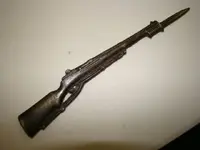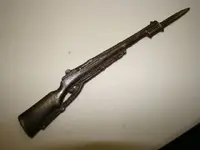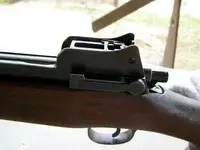Mike from MI
Silver Member
- Joined
- Oct 13, 2007
- Messages
- 3,263
- Reaction score
- 2,515
- Golden Thread
- 0
- Location
- Vicksburg Michigan
- 🏆 Honorable Mentions:
- 15
- Detector(s) used
- Etrac, Minelab Explorer II, Exterra 30, Fisher CZ-21, and CZ-20
- Primary Interest:
- All Treasure Hunting
The gun was found by a friend. It is about 9" long and I think made of lead. I could bend it with no trouble. Pretty sure it is not a letter opener. Any ideas?









